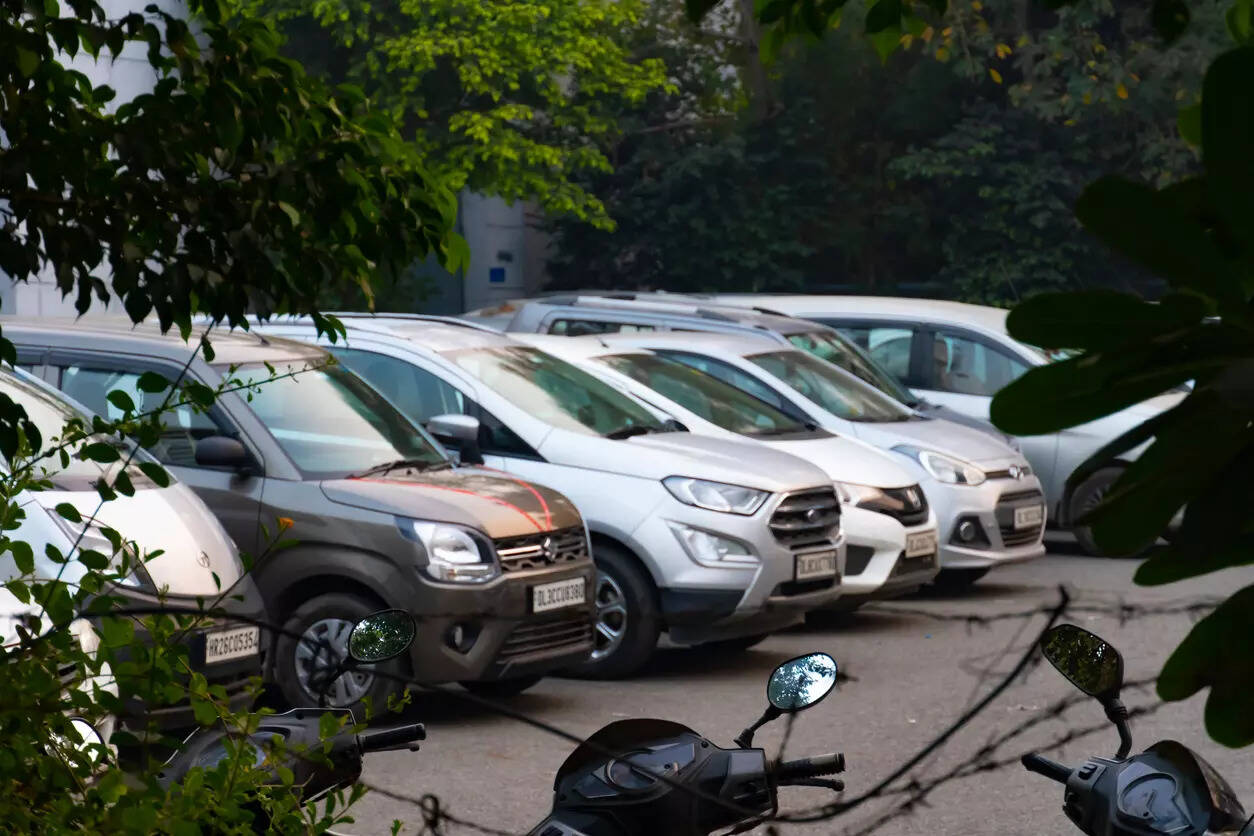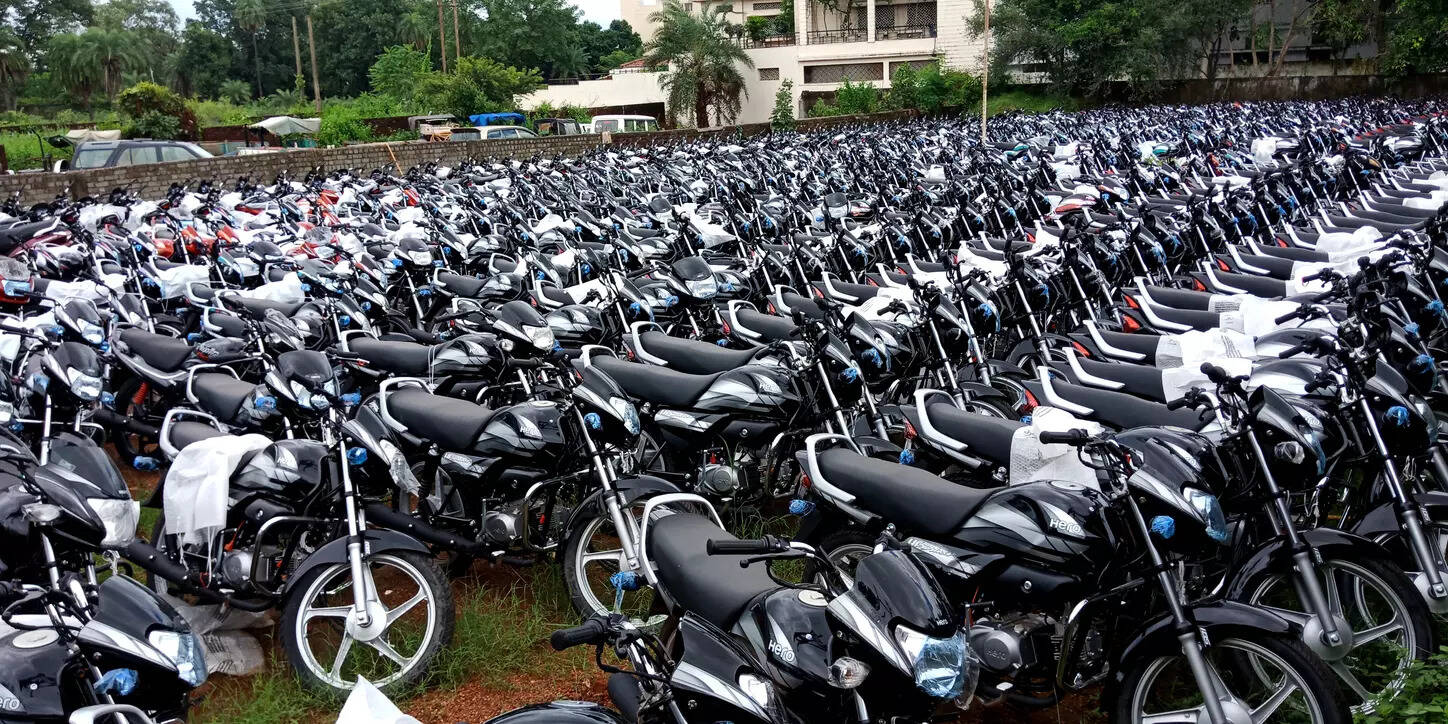
New Delhi: This time last year, the automotive industry was struggling to wriggle out of the woods. It was weighed down by the persisting damage of the COVID second wave, input cost push and supply chain challenges.
However, halfway through the current financial year, automobile sales graph is looking up owing to the low base of last year, easing of semiconductor shortage, narrowing supply- demand gap, exciting new launches and the enthusiasm of a COVID-free festive season after two years.
According to Motilal Oswal, the wholesales in September 2022 suggest a good festive season. While all the segments were inline, tractor sales were above estimates. Passenger vehicle (PV) wholesales doubled year-on-year due to easing of chip shortages and strong demand. Commercial vehicles (CVs) continue to grow on increasing economic activities & high capacity utilization.
“We expect the CV cycle to maintain its momentum. The two wheeler segment demand hinges on the festive season, which seems to have received an encouraging start. Domestic two wheeler inventory build-up for the upcoming festival season has begun,” it said.
The following is a segment-wise report of vehicle dispatches during September 2022.
Passenger vehicles
With the easing of chip shortage, there has been a decline in the waiting period for passenger vehicles.
Country’s largest carmaker Maruti Suzuki reported a steep growth in its domestic PV sales during the month. Sales for all the categories more than doubled on a year-on-year basis. Its mini cars (Alto, S-Presso) clocked 29,574 units, compact cars (Baleno, Celerio, Dzire, Ignis, Swift, Tour S, WagonR) reported sales of 72,176 units and the mid-size sedan Ciaz clocked 1,359 units.
Utility vehicles (Brezza, Ertiga, S-Cross, XL6, Grand Vitara) also grew to 32,574 units in September 2022 from 18,459 units in September last year.
Shashank Srivastava, Senior Executive Director, Maruti Suzuki, said, “It is the second best month for the company in 42 months. It is for the first time that the one million sales mark was breached by the industry in a quarter. Even the first six month wholesales are best-ever for the industry with sales of 19.37 lakh units.”
Hyundai Motor India also recorded a 50% growth compared to the year-ago period. Tarun Garg, Director (Sales, Marketing & Service), Hyundai Motor India Ltd., said, “With the excellent resilience shown by the Indian economy over the last few quarters, the festive season has further fuelled the demand momentum.”
For September, Tata Motors posted its highest-ever monthly sales of 47,654 units, including 43,999 units of ICE cars and 3,655 electric cars. “Going forward, we expect the festive season will witness strong retails on the back of improving supply of vehicles,” it said. Tata Motors sold
According to Shailesh Chandra, Managing Director, Tata Motors Passenger Vehicles and Tata Passenger Electric Mobility, the PV industry witnessed strong demand during Q2 FY23 fuelled by the festive season and new launches.
| Domestic Sales | Sep 2022 | Sep 2021 | % change |
| Maruti Suzuki | 1,48,380 | 63,111 | 135 |
| Hyundai | 49,700 | 33,087 | 50 |
| Tata Motors | 47,654 | 25,730 | 85 |
| Mahindra & Mahindra | 34,508 | 13,134 | 163 |
| Kia India | 25,857 | 14,441 | 79 |
| Toyota Kirloskar | 15,378 | 9,284 | 16 |
| Renault | |||
| Honda Cars | 8,714 | 6,765 | 29 |
| Nissan India | 7,265 | 8,716 | -17 |
| MG Motor | 3,808 | 3,241 | 17 |
| Skoda Auto | 3,543 | 3,027 | 17 |
| Volkswagen |
South Korean carmaker Kia said its domestic sales in September was led by Seltos with over 42% contribution, clocking 11,000 units. This was followed by Sonet and Carens with a contribution of 36% (9,291-unit sales) and over 20% (5,233-unit sales). The Carnival registered sales of 333 units.
Hardeep Singh Brar, Vice President & Head of Sales and Marketing, Kia India said that one of the reasons for the recovery in sales is due to the easing of supply chain constraints. “Not only Kia but the entire four-wheeler industry has healthy sales in September to cheer about, and then the peak of the festivity is yet to come.”
Veejay Nakra, President, Automotive Division, M&M, said, “September was a very exciting month with a strong start to the festive season. We continue to see very strong demand and performance across our portfolio of products, from SUVs, LCV’s less than 3.5 tons and our Last Mile Mobility brands.”
The maker of Scorpio said it has recorded the highest-ever SUV sales of 34,262 units, growing by 166% as against September last year.
Yuichi Murata, Director (Marketing and Sales), Honda Cars India, said, “The festive demand has been strong and continues to show good momentum. On the supply side, we were able to increase our factory output compared to last month which is also a positive for the festive sales in terms of better availability of Honda cars during the Navaratri, Dussehra and Diwali period.”
Czech carmaker Skoda Auto India achieved its highest-ever annual sales between January-August 2022.
Petr Solc, Brand Director, Skoda Auto India, said, “We are absolutely delighted to continue the success story of Skoda’s Biggest Year in India. This is an excellent result and a great recognition of all the hard work of our team and our dealer partners. The Kushaq and Slavia models have been successfully established in the market and drive the sales impetus”
“In addition, our D-Segment products like the Octavia and Superb are leading their respective categories. Our focus is now on further enhancing customer satisfaction and increasing Skoda customer touchpoints across India,” he said.
Two-wheelers
The two wheeler segment which had been under stress since the severe impact of COVID second wave on the Indian hinterland, appears to be on a recovery path.
“The upcoming festival season (Navratri and Diwali) is a crucial period for two-wheeler retails. Festivals such as Ganapati and Onam had encouraging start. Dealer inventory stands at 50-60 days as per our channel checks,” Motilal Oswal said.

Hero MotoCorp dispatched 480,237 motorcycles and 39,743 scooters in September 2022.
“Heading into the peak festive season, the company remains optimistic about customer demand over the coming weeks. The normal monsoon across most parts of the country and the encouraging farm activity is likely to contribute towards positive customer sentiments,” the two wheeler maker said in a statement.
To mark its entry into the EV segment, Hero will be launching its first-electric vehicle on October 7.
| Domestic Sales | Sep 2022 | Sep 2021 | % change |
| Hero MotoCorp | 5,07,690 | 5,05,462 | 0.4 |
| HMSI | |||
| TVS Motor | 2,83,878 | 2,44,084 | 16 |
| Bajaj Auto | 2,22,912 | 1,73,945 | 28 |
| Suzuki Motorcycles | 72,012 | 55,608 | 29 |
| Royal Enfield |
Suzuki Motorcycle India, the two-wheeler subsidiary of Suzuki Motor Corporation, Japan said in the month of September, the company recorded its highest ever overall monthly as well as domestic monthly sales figure since its inception in 2006.
Commercial vehicles and three-wheelers
According to Girish Wagh, Executive Director, Tata Motors, the commercial vehicles industry witnessed a consistent demand in Q2FY23. Tata Motors CV business registered a 20% growth in domestic sales during the quarter and this growth was led by stronger sales of MHCVs and a robust recovery in passenger carriers demand. Improving fleet utilizations, pick up in road construction projects and increase in cement consumption catalyzed the demand recovery for MHCVs.
“The recent exciting launches of the new range of smart trucks in MHCV and ILCV, and best‐ in‐class pickups will help us serve our customers better. Going forward, while we expect strong sales in the festive season we will maintain a close watch on the evolving geopolitical, inflation and interest rate risks on both the supply and demand,” he said.
Ashok Leyland reported its M&HCV domestic sales at 10,475 units in September this year as against just 4,529 units in the same month of last year. LCV sales grew to 6,024 units as compared to 4,258 units.
“CV demand has remained stable. M&HCV volumes which grew 32% year-on-year, were above our estimates and LCV volumes which grew 5% year-on-year were below the estimates,” said Motilal Oswal.
| Domestic Sales | Sep 2022 | Sep 2021 | % change |
| Tata Motors | 32,979 | 30,258 | 9 |
| Bajaj Auto | 31,752 | 18,403 | 73 |
| Mahindra & Mahindra | 27,440 | 12,449 | 120 |
| Ashok Leyland | 16,499 | 8,787 | 88 |
| VECV | |||
| TVS Motor | 2,158 | 813 | 165 |
Tractors
According to Hemant Sikka, President – Farm Equipment Sector, M&M, the company recorded its highest ever sales in a month.
“Demand remained strong during the month owing to the festive boost, which we expect to continue in October as well. With Kharif crop harvest starting soon and crop prices holding firm, the sentiment is positive. Above normal monsoon has improved the reservoir levels, leading to high moisture content in the soil, which is very positive for higher food grain production in the upcoming rabi season,” he said.
| Domestic Sales | Sep 2022 | Sep 2021 | % change |
| Mahindra & Mahindra | 47,100 | 39,053 | 21 |
| Escorts Kubota | 11,384 | 7,975 | 43 |
According to Escorts Kubota, overall macroeconomic factors and farmer sentiments remain positive led by “above normal” monsoon and the onset of an early festive season. It expects good momentum to continue in the current festive season.
While monsoons have been above long period average, they are still deficient in key states such as UP, Bihar, Jharkhand and West Bengal.
Read More:

